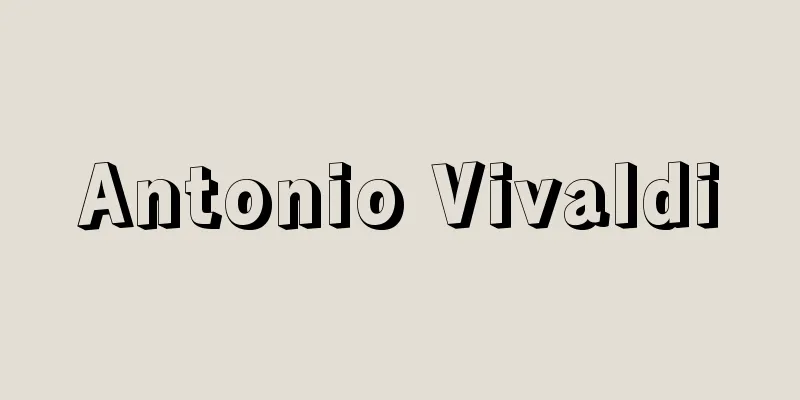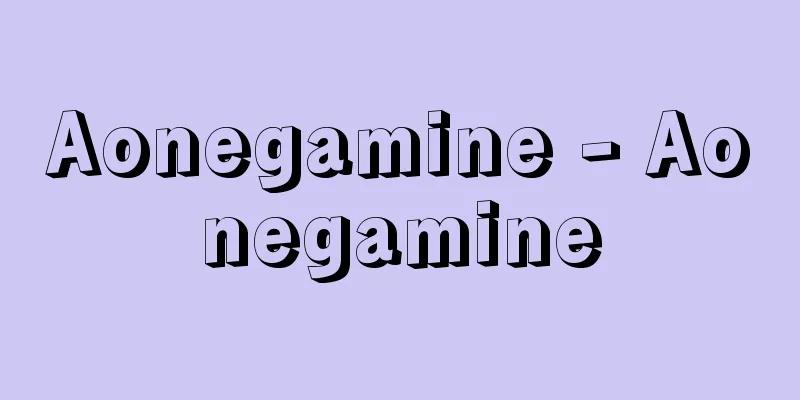Antonio Vivaldi

|
A composer and violinist who represents the Italian High Baroque period. He established the solo concerto style. He was born in Venice on March 4th as the eldest son of Giovanni Battista Vivaldi, a violinist at St. Mark's Basilica. He trained to be a priest, but due to his congenital asthma he was allowed to live with his parents and continue studying violin under his father. He was ordained as a priest in 1703, but was called the "red-haired priest" because of his father's hair color. His father was also called G. B. Rossi (redhead). Unable to celebrate mass due to a chronic illness, Vivaldi became a violin teacher at the Ospedale della Pieta (Pieta Orphanage), an orphanage and music school in Venice, in September of the same year. Although his association with the Pietà was intermittent, it continued until 1740, the year before his death, and he composed and performed many concertos and chamber music for the Pietà's female orchestra, which was famous in Europe at the time. The oldest work known today is the Trio Sonata, Opus 1 (1705), followed by the Violin Sonata, Opus 2 (1709), and the concerto set "Les Inspirations Harmoniques", Opus 3 (1711), which became his breakthrough work, and it seems that he composed only instrumental music until 1713. In April 1713, when Gasparini, the conductor of the Pietà, retired due to illness, Vivaldi also began composing sacred music. This resulted in the famous Gloria, masses, psalms, motets, and other works. His oratorio Juditha Victorious premiered in Venice in 1714. In the 1910s, Vivaldi entered the world of opera. He first gained fame with Otto in the Villa, which premiered in Vicenza in April 1713, and became active as a composer and impresario at the Teatro Sant'Angelo in Venice. The satirical work The Theatre of the Time (1720), written by Benedetto Marcello, one of the landlords of the theater, is considered to be a vivid depiction of the work of Vivaldi and others at that time. The 2014 Carnival (Winter) season opened with Vivaldi's opera Orlando d'Insanity, and by 2017 two more operas had been produced, while in 2016 and 2017 he had written three operas for the Teatro San Moisé. After 1718, Vivaldi's activities spread all over the country. Starting with the opera Armida in Mantua in April of that year, he performed a series of operas in the same city until 1720, and then he was active in Rome. Three operas, including Hercules at the Thermodon (1723), were performed in Rome for the Carnivals of 1723 and 1724, and the famous caricature by P. L. Ghezzi was also drawn around this time. It is thought that his relationship with the alto singer Anna Giraud also began around this time. She was an opera singer active mainly in Venice from 1724 to 1747, but Vivaldi was criticized for always keeping her and her sister Pauline close to him, despite being a priest. From 1726 to 1728, Vivaldi again focused his activities on the Teatro Sant'Angelo in Venice, but he also published a lot of instrumental music. Already in 1725, the collection of concertos "Experiments on Harmony and Invention", Op. 8, which included "The Four Seasons", was published by Le Seine in Amsterdam. In 1727, the same company also published the collection of concertos "La Cetola", Op. 9 (dedicated to Emperor Charles VI), around 1728, the collection of flute concertos Op. 10, which included "Storm at Sea" and "The Night Sky", and in 1729, the collection of concertos Op. 11 and 12. From 1729 to 1733, Vivaldi traveled to Prague and other places, performing operas there. From 1733 to 1735, he also wrote several operas for the Teatro Sant'Angelo and the Teatro Grimani in San Salute. This was his last operatic work in Venice, and thereafter he gave many performances in Verona, Ancona, Reggio, and Ferrara. In 1738, he was the musical director for the centenary celebrations of the Royal Theater in Amsterdam, and although he achieved great honors and success, he was refused entry into Ferrara because his lifestyle was not appropriate for a clergyman, and perhaps because his reputation in Venice had declined, he suddenly left his hometown in 1740, and died in Vienna on July 28, 1741, during a trip there. Of his approximately 770 works, 46 were operas, about 90 sonatas, and the core of his works were concertos, numbering about 500. Most of his concertos (approximately 350 in total) are solo concertos, of which approximately 230 are violin concertos. His approximately 60 string concertos are similar to opera overtures and can be considered the precursors of pre-classical symphonies. We must not forget his enormous influence on composers of his time, including Bach. [Ryuichi Higuchi] "Vivaldi - Life and Works" by Penciel, translated by Masaaki Hayakawa and Makoto Katsura (1970, Ongaku No Tomosha)" ▽ "Vivaldi" by Candé, translated by Kosaku Toguchi (1970, Hakusuisha) ▽ "How to Play Vivaldi" by Korneder, translated by Usaburo Mabuchi and Noriko Omura (1977, Academia Music)" [Reference] |Source: Shogakukan Encyclopedia Nipponica About Encyclopedia Nipponica Information | Legend |
|
イタリア盛期バロックを代表する作曲家、バイオリン奏者。独奏協奏曲様式の確立者。3月4日、サン・マルコ大聖堂付きバイオリン奏者ジョバンニ・バティスタ・ビバルディの長男としてベネチアで生まれる。聖職者としての修行を積むが、生まれつきの喘息(ぜんそく)のため親元から通う例外が許され、父のもとでのバイオリンの勉強も続けられたと考えられる。1703年司祭に叙されるが、父親譲りの髪の色のために「赤毛の司祭」とよばれた。父もまたG・B・ロッシ(赤毛)とよばれている。持病のためミサを司式することができなかったビバルディは、同年9月、ベネチアにあった孤児院兼音楽学校オスペダーレ・デッラ・ピエタ(ピエタ養育院)のバイオリン教師となる。「ピエタ」との関係は断続的ではあるが結局死の前年の1740年まで続き、当時のヨーロッパに名声をとどろかせていたそこの女性オーケストラのため、数多くの協奏曲、室内楽曲を作曲、上演した。今日知られているもっとも古い作品はトリオ・ソナタ集作品1(1705)で、その後バイオリン・ソナタ集作品2(1709)、さらには出世作となった協奏曲集『調和の霊感』作品3(1711)をはじめ、1713年までは器楽曲ばかり作曲していたようである。 1713年4月、「ピエタ」の楽長だったガスパリーニの病気退職に伴い、ビバルディは宗教音楽の作曲も始める。こうして有名な『グローリア』をはじめとするミサ曲、詩篇(しへん)、モテットなどが生まれるのである。オラトリオ『勝利のユディタ』は14年にベネチアで初演されている。10年代に、ビバルディはオペラの世界に足を踏み入れる。13年4月にビチェンツァで初演された『離宮のオットー大帝』によって初めて名声を得た彼は、ベネチアのサンタンジェロ劇場の作曲家兼興行師として活躍することになる。この劇場の地主の一人だったベネデット・マルチェロが書いた風刺的な著作『当世の劇場』(1720)は、当時のビバルディたちの仕事ぶりを生き生きと描写したものと考えられている。14年の謝肉祭(冬)のシーズンはビバルディのオペラ『狂気をよそおうオルランド』で開幕され、17年までにさらに2曲のオペラが上演されており、16~17年にはサン・モイゼ劇場のためにも3曲のオペラを書いている。 1718年以後、ビバルディの活動は各地に広がってゆく。その年の4月にマントバでオペラ『エジプト戦場のアルミーダ』を上演したのを皮切りに、20年までは同地で次々にオペラを上演し、その後はローマで活躍している。23年と24年の謝肉祭には『テルモドン川のヘラクレス』(1723)をはじめとする3曲のオペラがローマで上演されているが、P・L・ゲッツィ描く有名な風刺画もこのころ描かれたものである。アルト歌手アンナ・ジローとの関係も、このころ始まったと思われる。彼女は1724~47年、ベネチアを中心に活躍したオペラ歌手だが、ビバルディは司祭の身にもかかわらず、彼女とその妹のパウリーネをつねに身近に置いたため、指弾を受けることになる。 1726~28年、ビバルディはふたたびベネチアのサンタンジェロ劇場を中心に活躍するが、器楽曲の出版も盛んである。すでに25年には、『四季』を含む協奏曲集『和声と創意への試み』作品8がアムステルダムのル・セーヌから出版されているほか、同社からは27年には協奏曲集『ラ・チェトラ』作品9(皇帝カール6世に献呈)、28年ごろには『海の嵐(あらし)』や『ごしきひわ』を含むフルート協奏曲集作品10、29年には協奏曲集作品11、12が出版されている。 1729~33年、ビバルディはプラハをはじめとして各地に旅行し、オペラを上演しているが、33~35年にはまたサンタンジェロ劇場と、サン・サルートのグリマーニ劇場のためにも数曲のオペラを書いている。ベネチアでのオペラ活動はこのころが最後で、以後はベローナ、アンコーナ、レッジョ、フェッラーラでの興行が多くなる。38年にはアムステルダムの王立劇場百年祭の音楽監督を務めるなど、名誉と成功を得た反面、聖職者らしからぬ生活を理由に、フェッラーラからは入国を拒否されるという事件もあり、ベネチアでの評判も落ちたためか、40年には突然故郷を捨て、翌41年7月28日、旅先のウィーンで客死している。約770曲の作品中、オペラは46曲、ソナタが約90曲で、中心は約500曲を数える協奏曲である。リトルネッロ形式をおもな構成原理とする協奏曲の編成のほとんど(約350曲)は独奏協奏曲で、そのうち約230曲はバイオリン協奏曲である。約60曲の弦楽のための協奏曲は、オペラの序曲に近く、前古典派の交響曲の先駆的存在ともいえる。バッハをはじめとする当時の作曲家に与えた多大な影響も忘れてはならない。 [樋口隆一] 『パンシェルル著、早川正昭・桂誠訳『ヴィヴァルディ――生涯と作品』(1970・音楽之友社)』▽『カンデ著、戸口幸策訳『ヴィヴァルディ』(1970・白水社)』▽『コルネーダー著、馬淵卯三郎・大村典子訳『ヴィヴァルディの演奏法』(1977・アカデミア・ミュージック)』 [参照項目] |出典 小学館 日本大百科全書(ニッポニカ)日本大百科全書(ニッポニカ)について 情報 | 凡例 |
<<: Jivaro - Jivaro (English spelling)
>>: Bihar (state) (English spelling)
Recommend
Cortinarius elatior
…[Rokuya Imaseki]. . … *Some of the terminology e...
Hymn - hymn (English spelling)
Songs that praise the Christian God, saints, even...
Aemasia lichenosa (English spelling) Aemasia lichenosa
...Its thick skin, with beautiful white spots edg...
Japanese Brown Cattle
A dual-purpose cattle breed found mainly in Kumamo...
Pension system - Onkyusei
A system in which a lord grants land to a servant ...
Terrine - French
This is a pâté dish made by packing a terrine int...
Royal Law - Oubou
〘Noun〙 (later known as "ouhou") The corr...
Chromium Acetate - Chromium Acetate
Compounds in oxidation states II and III are known...
Nuclear fuel handling officer - nuclear fuel handling officer
…In accordance with the spirit of the Atomic Ener...
Babylonian art
Art of the ancient Semites developed around the an...
Kancho - Kancho
A Shingon Buddhist monk in the mid-Heian period. ...
Mukawa [town] - Mukawa
A former town in Yufutsu District, Hokkaido. Facin...
Outcall, RF - Outcall
…The World's Sunday edition featured an eight...
Hatahata (sailfin sandfish) - Hatahata (English spelling)
A marine fish of the family Padae in the order Per...
Rufinus, Tyrannius
Born: circa 345. Concordia, near Aquileia [Died] 4...









